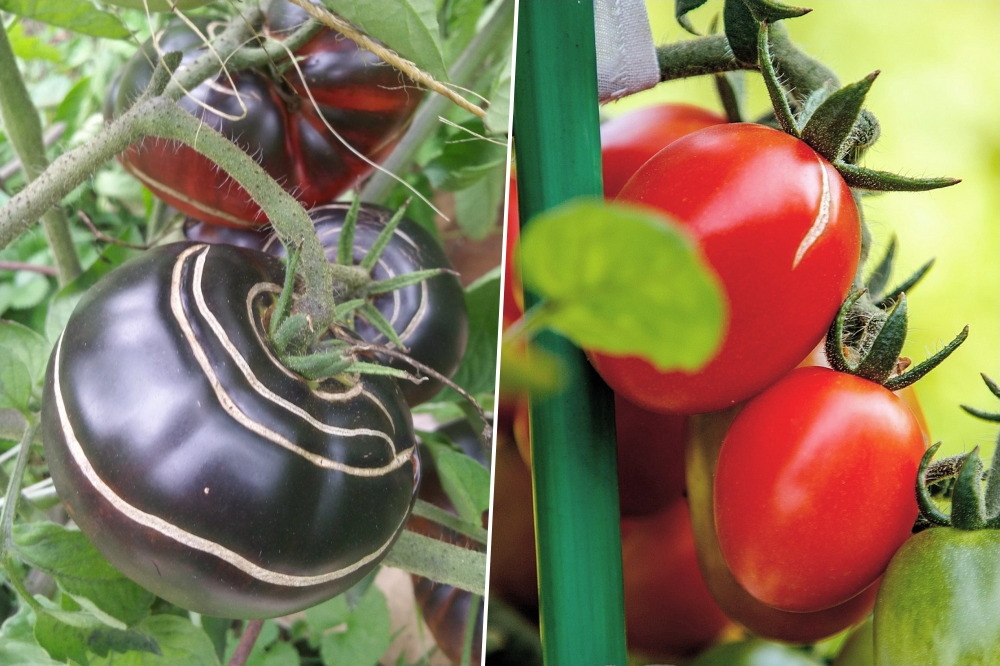Tomatoes are a beloved staple in gardens around the world, cherished for their vibrant flavor and versatility in the kitchen. However, one common issue that many gardeners face is tomato cracking. This phenomenon can be disheartening, especially after investing time and effort into cultivating healthy plants. In this article, we’ll explore what tomato cracking looks like, the reasons behind it, when it typically occurs, its impact on edibility, and steps to prevent it.
Signs of Tomato Cracking
Tomato cracking manifests as splits or fissures on the skin of the fruit. These cracks usually appear near the stem, radiating outward or forming concentric circles around the top of the tomato. There are two main types of cracks:
- Radial Cracking: These cracks extend from the stem end towards the blossom end, often resulting in deep fissures.
- Concentric Cracking: These cracks form rings around the stem end of the tomato, typically shallower than radial cracks.

Reasons for Tomato Cracking
Tomato cracking is primarily caused by fluctuations in water availability and environmental conditions. Here are the most typical reasons:
- Inconsistent Watering: Rapid changes in soil moisture levels, such as heavy rain following a dry spell, can cause tomatoes to swell quickly, leading to skin splitting.
- High Humidity: High humidity levels can also contribute to cracking by affecting the tomato’s skin elasticity and increasing the internal pressure.
- Temperature Fluctuations: Sudden changes in temperature, especially high daytime temperatures followed by cool nights, can stress the plants and cause cracking.
- Varietal Susceptibility: Some tomato varieties have thinner skins and are more prone to cracking than others.
- Nutrient Imbalance: A lack of certain nutrients, particularly calcium, can weaken the tomato skin, making it more susceptible to cracking.

Timing of Cracking in Tomato Cultivation
Tomato cracking typically occurs during periods of rapid growth and fruit development. This is often during the mid to late growing season when tomatoes are maturing and ripening. The risk is higher when there are significant changes in weather patterns, such as unexpected rainstorms or heatwaves.

Edibility of Cracked Tomatoes
Cracked tomatoes are generally safe to eat, provided the cracks are not extensive and there are no signs of mold or rot. The flavor and nutritional value remain intact, although their shelf life may be reduced. It’s advisable to consume cracked tomatoes soon after harvesting or to use them in sauces and soups where appearance is less critical.

Preventing Tomato Cracking
Preventing tomato cracking involves managing environmental factors and ensuring consistent care. Here are some practical steps gardeners can take:
- Regular Watering: Maintain a consistent watering schedule to avoid drastic changes in soil moisture. Using mulch can help retain soil moisture and reduce fluctuations.
- Choose Resistant Varieties: Opt for tomato varieties known for their resistance to cracking. Heirloom varieties are often more prone to cracking than modern hybrids.
- Proper Spacing: Ensure adequate spacing between plants to improve air circulation and reduce humidity around the fruit.
- Nutrient Management: Provide balanced fertilization, paying attention to calcium levels. Using a fertilizer designed for tomatoes can help maintain the right nutrient balance.
- Protect from Extremes: Use shade cloths during extreme heat and cover plants during heavy rains to mitigate environmental stresses.
In conclusion, while tomato cracking can be a common and frustrating issue for gardeners, understanding the causes and implementing preventive measures can significantly reduce its occurrence. By maintaining consistent watering practices, choosing the right varieties, and managing environmental factors, gardeners can enjoy a bountiful harvest of unblemished tomatoes. Remember, even cracked tomatoes have their place in the kitchen, ensuring that no fruit goes to waste. Happy gardening!









